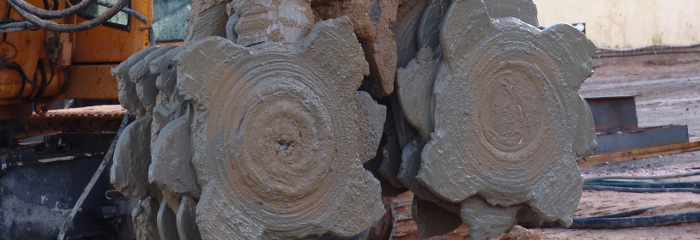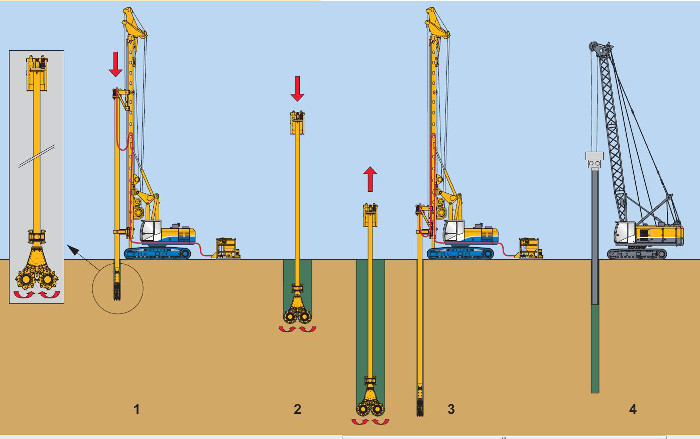Bauer Maschinen GmbH has developed the CSM technology in 2003, benefiting of their experience in the production and application of hydrocutters in of diaphragm walls for the construction of retaining walls and waterproofing.
The CSM system differs from conventional techniques which in-situ soil is mixed with cement slurry by rotary tools on a vertical axis, using a mixing tool that rotates around a horizontal axis.
CSM is mainly used for stabilizing soft soils (cohesive and non-cohesive), however, the equipment used, derived from Bauer's hydrocutter, extends the applicability of the method to more compact and hard layers compared to other methods of Deep Soil Mixing.
The main advantages of this technique are:
- High productivity;
- Use of in-situ soil as a construction material;
- Low generation of reflux, an important factor in contaminated areas;
- Do not create vibration during construction;
- Reaches depths greater than 60 meters, when equipment suspended by cables are used;
- Creates rectangular panels, ideal for building walls;
- Instrumentation inside the cutter monitors the coordinates x, y and z in real time ensuring the correct positioning of the tool;
- Cutting and mixing energy created at the point of attack;
- Capacity of embedding in the underlying rock.
A continuous wall is formed by the construction of individual panels in alternating sequence, overlapping primary and secondary panels. The secondary panels may be performed immediately after the primary panels, fresh-in-fresh. The cutter technology also allows the cutting of primary panels that have hardened, hard-in-hard. To use the wall as a retaining wall, metallic section beams can be inserted in the fresh mixture as reinforcement.
The execution of each panel has the construction sequence as follows:
Preparation
Opening a ditch guide to get reflux of the grout.
1 - Alignment
Positioning of Cutter tool in the axis of the wall.
No guiding walls are required.
2 - Descent
The cutter is pushed against the ground at a continuous speed.
The soil matrix is broken by cutting wheels, while the grout is pumped to the injectors, positioned between the cutting wheels, where it is mixed with the loose soil.
The addition of compressed air can improve the process of breaking and mixing in the descending phase and h direction of rotation of the wheels can be varied at any time.
The cutting wheels and teeth push the soil particles through vertically mounted cutting plates which have the effect of a mixer.
The speed of penetration of the cutter and the volume of grout pumped are adjusted by the operator to optimize the energy absorption and to create a mass of homogeneous plastic soil allowing easy penetration and extraction equipment.
The typical rate of penetration is 20-60 cm/min.
3 - Ascent
After reaching the expected depth of the project, the mixing tool is slowly extracted while the grout is continuously added.
The homogenization of the fluidised mixture of soil with fresh cement is ensured by the rotation of the wheels.
4 - Reinforcement
The reinforcing elements necessary for structural proposes should be inserted into the panel still fresh.
Usually, metal IPE or HE sections are used.
For small depths, they tend to penetrate under its own weight, otherwise, a light vibrator can be used to aid the installation of the sections.
The distance between metal sections is calculated based on the applied loads, the results the characteristic soil strength and the applicable rules.
The equipment used in the execution of CSM panels is large and heavy, requiring a flat horizontal work platform. It is provided with a Kelly bar, which is coupled with cutting and mixing tool, the "Cutter".
Drilling Rigs
The basic models of the equipment, vary in size, weight and height of the tower, resulting in different limitations of the characteristics of the panels produced as the maximum depth.
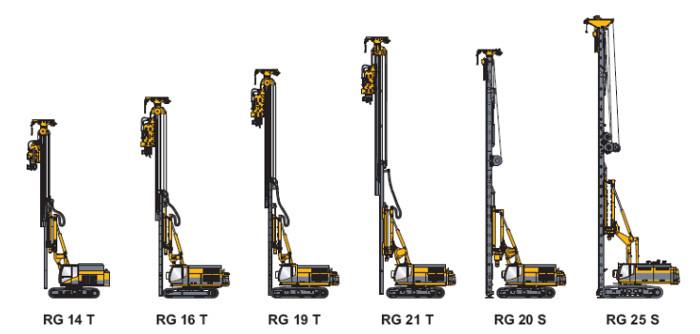
Kelly bars
The Kelly bar can be circular or rectangular. A circular Kelly bar is one piece with a diameter of 368mm and is capable of executing panels up to 24 meters. The rectangular bar, with dimensions of 600x300mm, is divided into sections of 11 meters, allowing the execution of panels up to 34 meters.
Wheels
The wheels of the Cutter have support for 3 or 4 teeth by alignment.
The wheels with three teeth have a larger cutting capacity, since the torque is applied on three points, resulting in greater force per tooth.
On the other hand, the wheels with four teeth have a greater mixing ability.
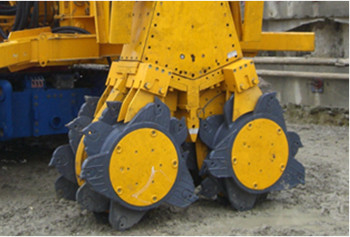
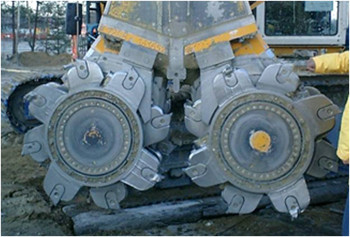
Control of production parameters
The CSM device is equipped with various sensors that measure parameters relevant for the quality control of the panels.
These parameters are read and viewed in real time by the equipment operator and stored to be consulted later.
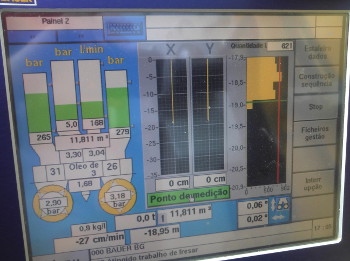
In measured parameters, we highlight the following:
- Depth
- Volume treated
- Grout pressure at the injectors
- Neutral pressure of the soil-cement mixture
- Volume of grout pumped per unit of time
- Volume of grouted pumped per unit of depth
- Inclination in two directions
- Rotational speed of the wheels
- Ascent/Descent speed of the tool
Documentation
All production parameters are monitored, recorded and stored in the equipment during the building process and can be printed as a report for quality control for each individual panel.
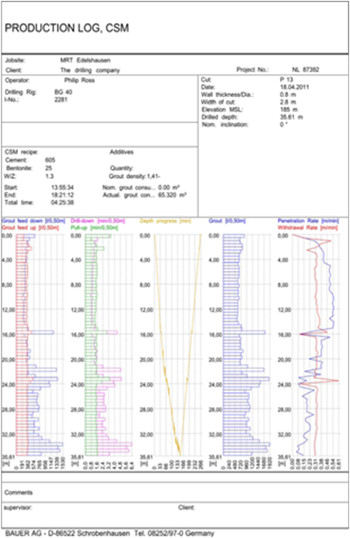
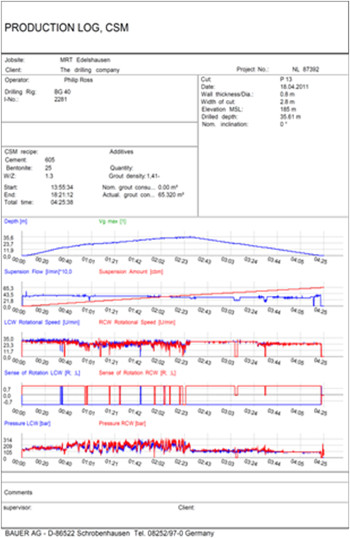
ÉSamples of soil-cement mixture
Quality control of soil-cement mixture may also include the collection of samples of the mixture, either still fresh or already hardened.
Samples of fresh mixture are obtained with a special tool for this purpose.
The samples of the hardened mixture may be obtained by horizontal drilling with manual core drilling tools, or vertically through the traditional methods of core drilling for geological survey.
